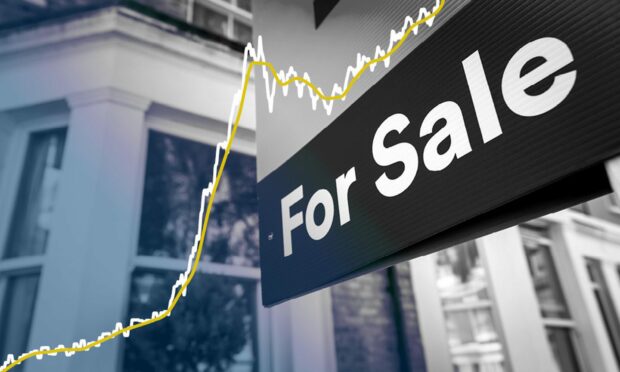Whether you are looking to rent or buy a property, the housing market can be daunting.
The average price of a property can differ depending on the area you’re looking at, but can also fluctuate.
To help track how much an average home might cost you across Scotland either in rent or purchase price, we’ve put together a price tracker to take some of the stress off.
Our interactive charts and maps will be updated when new data becomes available. The data comes from the Registers of Scotland, who are the government body responsible for keeping registers of land and property transactions and ownership.
How much does an average house in your area cost?
The average house price in Scotland reached a record high in October 2022. However the latest data shows a fall in house prices towards the end of last year, and it is speculated that prices may continue to fall in 2023 due to the knock on effects of increased interest rates on mortgage affordability.
Looking to buy a new home? To keep up to date with the housing market in 2023, and to what extent different regions experience or avoid a crash, our tracker breaks down the latest data by local authority area. Use the tool below to build your own chart and compare average property prices across several areas.
Have a particular area in mind you’re looking at moving to? The below map shows the average price by neighbourhood data from across Scotland.
The data provided in the map below is subject to lag and is based on 2019 house prices but it will be updated whenever new data becomes available.
Are you priced out of the market?
Use our handy map below to see if your household can afford to buy the average house in each local authority in Scotland.
The data uses a calculation of mortgage based on 4.5 times the household income with areas marked as affordable, or somewhere you would be priced out of, depending on your household salary.
Some areas are marked with maybe, which means that it may be affordable to some households within the bracket. The higher up the band your household income is, the more likely you are to be able to afford the “maybe” areas.
The map does not take into account deposits, which also affects how much you are able to borrow. The analysis makes several assumptions and is intended as a guide and not to be treated as financial advice.
Got that perfect Scottish house in mind? Our just for fun chart below shows how many average bottles of Irn Bru you’d have to forgo to be able to afford a 10% deposit, based on your area. The kind of numbers involved in house buying can be scary and hard to visualise. Our aim with this chart is to help our readers contextualise the data.
Our analysis is based on the average house price in each area, a 10% deposit and a 500ml bottle of Scotland’s other national drink costing £1.15.
Are house prices in Scotland rising?
House prices in Scotland have almost continually been on the rise since 1968.
Although house prices started low in the 60s and 70s, they have skyrocketed since, despite the average annual wage not increasing in relation.
The biggest drop was recorded between May 2008 and February 2009, and has fluctuated slightly across the months since, although has mainly kept climbing.
With uncertainty in the housing market due to inflation and high interest rates, some people think that house prices will fall in 2023. Our chart puts any house price decreases into context of the 2008 financial crash.
Prices are trending upwards across the board as people in Scotland struggle to get on the housing ladder and also move up the housing ladder. The chart below shows a breakdown of house prices by Scottish local authority and by property type. Use the buttons to change the property types and build your own chart by selecting relevant local authorities from the dropdown.
The DC Thomson data team aim to make data more accessible to our communities. If you have any feedback or suggestions of future projects you can get in touch with us at datateam@dctmedia.co.uk
More from our data team
 Our tracker includes data on Covid cases in your area, hospital admissions and deaths in each local authority in Scotland.
Our tracker includes data on Covid cases in your area, hospital admissions and deaths in each local authority in Scotland.

We’ve put together a collection of Covid vaccine tracker charts to monitor the progress of the Covid-19 vaccine rollout across the UK.
Meet the data team

